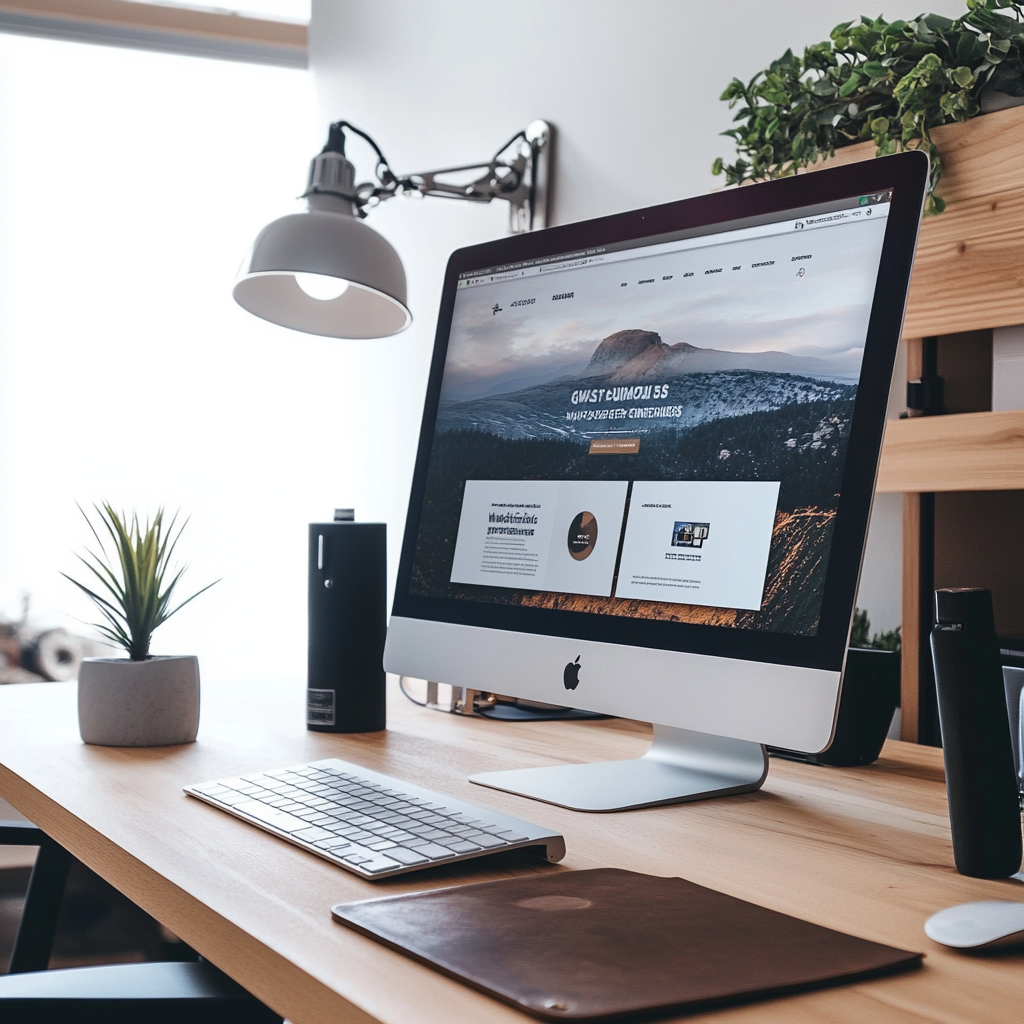The Impact of Professional Website Design on Your SEO Rankings
Introduction to website design and SEO rankings
Your website's design is not just about looking sharp. It plays a crucial role in how your site performs in search engine rankings, a concept we often refer to as SEO (Search Engine Optimization). Think of your website as a fishing net. The better it's designed, the more fish (or visitors) you're likely to catch. Simple, right?
Search engines like Google have bots that crawl your site, looking at design and content to determine where your site should rank. If your site is easy to navigate, loads quickly, and looks good on all devices, these bots are happier. And when they're happy, your site climbs higher up the rankings. So, investing in professional website design isn't just about aesthetics; it's about making your site more discoverable to potential visitors. Let's dive deeper into how a solid website design can boost your SEO and why it should be at the forefront of your digital strategy.

How a website design company influences SEO
A website design company plays a critical role in your site’s SEO rankings. Google loves websites that provide users with a fast, engaging, and user-friendly experience. Here’s how a design company can make that happen:
- First, by creating a responsive design that looks great on any device, from phones to desktops, making sure your site adapts seamlessly.
- Second, they ensure fast loading times. A site that loads quickly reduces bounce rates and encourages users to stay longer.
- Next, they structure your site in a way that's easy for search engines to understand, using proper HTML tags, streamlined coding, and clear navigation paths.
- Also, integrating social media elements and blogs can boost your site's relevance and connections, further enhancing SEO.
- Lastly, by creating an aesthetically pleasing design, they make your website more inviting, which can encourage visitors to share your content.
This direct impact on user experience and site performance ties back to better SEO rankings, putting you ahead of the competition. Remember, good design and SEO go hand in hand.
The role of mobile responsiveness in SEO
Mobile responsiveness is a big deal for your website's SEO rankings. If your website looks good and works well on a phone or tablet, Google will like it more. Why? Because most people use their phones to browse the internet these days. When your site is easy to read and navigate on a mobile device, it keeps visitors happy. Google notices this and thinks, "This site is doing a good job for mobile users," which can help your site move up in search rankings. If your site isn't mobile-friendly, you're missing out on a huge opportunity to improve your SEO and reach more people. So, making sure your website is designed to work on all devices is key.
The importance of user experience (UX) in website design
A well-designed website does more than just look good. It plays a vital role in providing a great user experience (UX), which is critical for your SEO rankings. Why? Because search engines like Google put a lot of emphasis on how user-friendly a website is. If your site is easy to navigate, loads quickly, and looks appealing, people are more likely to stay longer and interact more. This signals to search engines that your site is valuable, bumping up your ranking.
Think of it this way: when a visitor lands on your site, you've got a few seconds to convince them to stick around. A cluttered layout, slow loading times, or hard-to-find information will send them back to their search results. On the other hand, a smooth and enjoyable website experience encourages them to explore, decreasing your site's bounce rate and improving your chances of ranking higher.
So, investing in a well-thought-out website design is not just about aesthetics; it’s about creating an environment where your visitors can easily find what they’re looking for. This includes having a mobile-friendly design, fast page speeds, intuitive navigation, and content that's easy to read and engaging. Remember, the better the UX, the higher your site will climb in the search rankings.
Speed optimization: A crucial factor for SEO success
Google loves fast websites. A snappy site not only makes a good first impression, but it also helps with your site's ranking on search engines. When your site takes forever to load, visitors bounce. And when visitors bounce, Google takes it as a sign that your site might not be the most user-friendly. That's bad news for your SEO. Speed optimization means making your website load faster. You can do this by compressing images, minifying code, and leveraging browser caching. It's all about giving users what they want quickly. Remember, every second counts. A delay of even a millisecond can lose visitors and lower your rank on search engines. So, focus on speed to keep both your visitors and Google happy.
Navigational structure and its impact on SEO
A good navigational structure on your website doesn't just help your visitors find their way around; it also boosts your SEO rankings. Think of your website as a map. If the map is clear and easy to follow, people and search engines will have a better time understanding and navigating through your content. Here's the deal: Search engines, like Google, love websites that are easy to crawl. This means if your site's structure is straightforward, search engines can easily figure out what your site is about, which pages are important, and how they're connected. This understanding leads to higher rankings in search results. So, keep your website's menu clear, and make sure your pages are logically organized. Remember, a simple, intuitive design goes a long way in helping both your visitors and search engine bots find what they're looking for.
Content visibility and website design synergy
A website's design and its content are like two sides of the same coin; both are crucial for your site's success, especially when talking about SEO rankings. Think of your website as a storefront. If customers can't easily find what they're looking for because of poor layout or hard-to-read fonts, they'll leave. It's the same online. Google and other search engines prefer websites that offer a great user experience. This means your site should be easy to navigate, with a clear structure guiding visitors to the information they need without any hassle.
A well-designed website helps your content shine. It's not just about making things look pretty; it's about creating a seamless experience for your visitors. When your site is easy to use, people stay longer, reducing your bounce rate. This signals to search engines that your website is valuable, pushing you up in the rankings. Additionally, proper use of headings, subheadings, and keywords in your design makes it easier for search engines to understand what your site is about, further boosting your SEO.
In essence, the synergy between design and content visibility is key. A stellar design amplifies the impact of your content, making sure it's not just seen, but also appreciated. This, in turn, can have a significant positive effect on your SEO rankings.
Incorporating SEO strategies during the design process
When building a website, thinking about SEO from the start is a game-changer. It's not just about adding the right keywords. It's about designing it in a way that search engines love. Here's how you do it:
- First, make sure your website loads fast. Search engines, like Google, favor websites that don't keep people waiting.
- Next, your website should look good on any device, not just a desktop. More people are using phones to browse, and if your site isn’t mobile-friendly, it’s likely to be ignored by Google.
- Then, use headings (H1, H2, H3) to organize your content. It helps Google understand what's important on your page. Simple, clean navigation is also key. If people can’t find their way around your site, they’ll leave, and Google will notice.
- Lastly, don’t forget to add alt text to images. It helps search engines understand what the images are about, making your site more accessible and improving your ranking.
Incorporating these SEO strategies doesn't just help your site rank higher; it makes it more user-friendly, which, in turn, keeps visitors coming back.
Conclusion: Partnering with a website design company to boost SEO rankings
Hiring a website design company isn't just about getting a sleek look for your site. It's a smart move for your SEO rankings too. These pros know how to make your website not just attractive but also SEO-friendly. They ensure your site is fast, mobile-optimized, and loaded with the right keywords in the right places. Remember, Google loves websites that provide a great user experience. Partnering with a design company means you get all this expertise working for you. This can push your site up in search rankings, making it easier for customers to find you. It's a solid investment towards making your site both look good and rank well on search engines.




